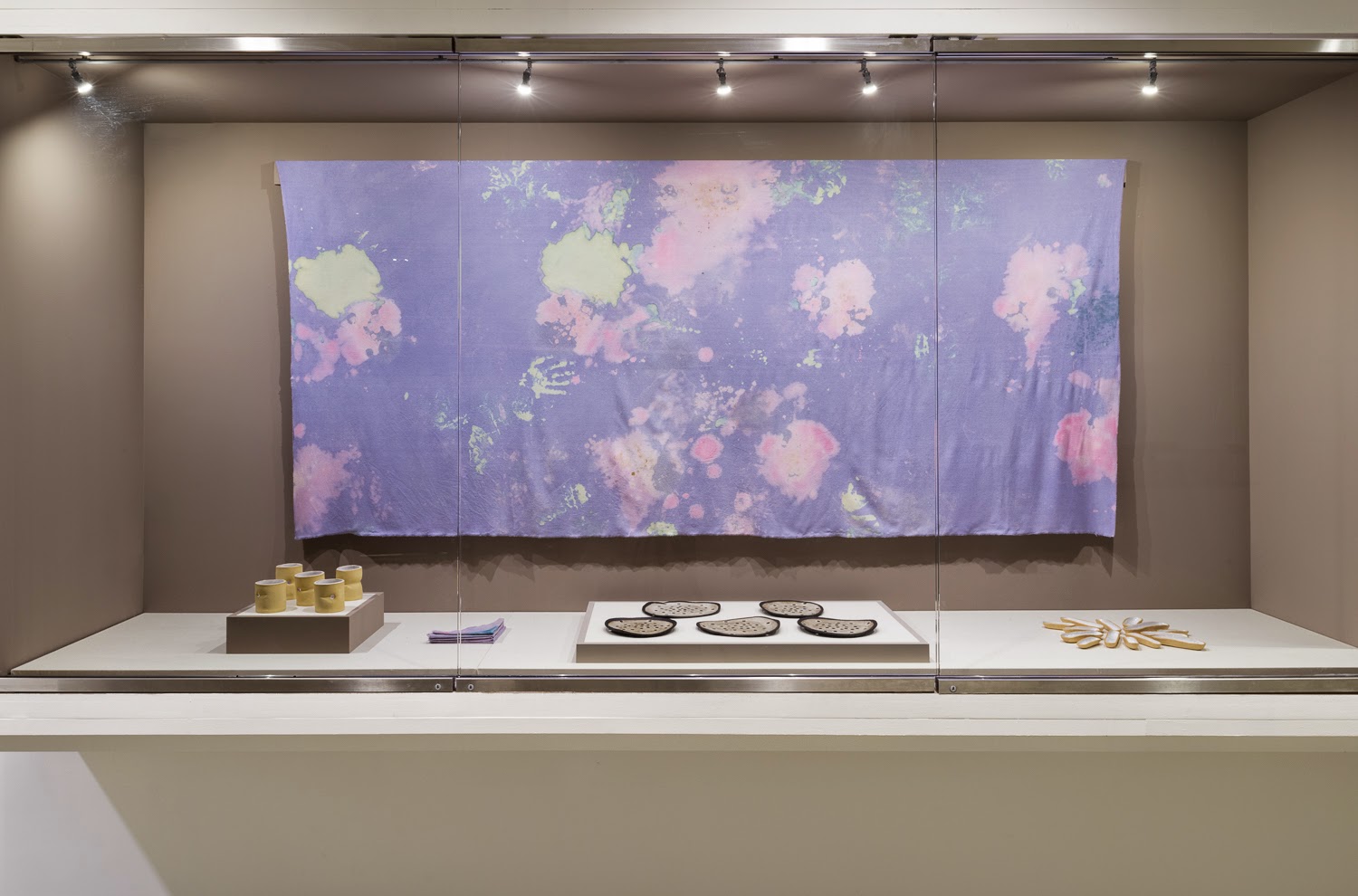Artist Helena Keeffe Talks About Collaboration
 |
| A Menu for Recognizing Invisible Forces by Helena Keeffe and Jessica Prentice |
In That Case: Havruta in Contemporary Art is based on the Talmudic principle of havruta—the study of religious texts by people in pairs. The root word haver—“friend” in Hebrew—emphasizes the communal nature of learning, and the havruta learning model reflects the Jewish affinity for asking questions and grappling with complex topics, together. Each local artist invited to participate is given the opportunity of working with an established writer, scientist, thinker, or academic in a field of their choosing.
For the second iteration of In That Case, San Francisco
artist Helena Keeffe collaborated with Richmond, CA-based chef and food
activist Jessica Prentice. Helena spoke about the collaboration with Curatorial
Associate Claire Frost.
 |
| A Menu for Recognizing Invisible Forces by Helena Keeffe and Jessica Prentice |
Claire Frost: How did you choose to work with Jessica Prentice on this project?
Helena Keeffe: I was talking about the Havruta invitation with my friend
Melinda Stone who shares my interest in skills associated with homesteading and
traditional cooking methods. She recommended that I read Jessica’s book, Full
Moon Feast. Jessica had been the chef at the Headlands Center for the Arts
several years ago when Melinda was an artist in residence there and when she
talked about how Jessica’s cooking impacted her, she got choked up (she
particularly remembered trying beets Jessica had cooked and wondering why she’d
gone so long not eating beets). I picked up the book and was immediately
absorbed. Each chapter borrows a name (such as Ale Moon, Milk Moon, and Wort Moon) given by people from different parts of the world to the moon at
different times of the year. Jessica uses these moon names to organize a
comprehensive look at traditional diets and ways of processing and preserving
food. I’ve been working with food and the social space of a meal in my work for
a while now and it seemed like partnering with an educator so passionate about
foodways would be a great way to deepen my own practice. Jessica is credited
with coining the term locavore and is the co-founder of Three Stone Hearth, a
community supported kitchen in Berkeley. I can’t think of a better study
partner when it comes to food as a topic for inquiry.
What is most exciting to you about this project?
I love that the process of art making is emphasized in this
project. I also think it’s important to develop conversations across
disciplines, though it can be challenging. It’s easy to get used to a shared
language amongst people from one’s own discipline and sometimes this can lead
to a kind of laziness. Working with Jessica means that I have to try to
understand her approach from her perspective and I also have to be articulate
about what matters to me in the process. There is always a certain amount of
the unknown that comes into play in a collaboration and that is exciting.
What is challenging to you about this project?
The same things that make it exciting also make it challenging.
We are both busy people so we have limited time to spend together getting to
know each other’s worlds. We are passionate about many of the same things but
our ideas of how to share them with an audience might be different. I also
think the case is challenging. It’s huge and boxy!
 |
| A Menu for Recognizing Invisible Forces by Helena Keeffe and Jessica Prentice |
You and Jessica have similar themes in the work you do, community, food, and education being a few of them. Are there other similarities that you have discovered since you started working together?
We both have a carrot shaped birthmark on the back of our
right shoulders! Just kidding. We do share a love of a certain kind of object
that is both beautiful and utilitarian. Beautiful tools. We share a lot of
similar values and hopes for how our work might have an impact in the world. I
think we are both pragmatic idealists.
 |
| A Menu for Recognizing Invisible Forces by Helena Keeffe and Jessica Prentice |
Collaboration of various types has figured in your previous work. Do you feel this collaboration follows that model or does it fit into a different category?
Each collaboration is unique. In fact, I find that word collaboration problematic (like so many other words) because it is used to describe so many different kinds of working relationships. In the past I have often come up with a concept for which I develop a loose framework and then I invite others in to contribute their particular skills and input to flesh the thing out. This is still collaborative in that I’m not a director telling people exactly what to do, but I do have a lead role. In this case, I was the one to bring Jessica in to the project. It is framed as a visual art project so even though I have tried to enter into the initial conversations with her without any specific outcome in mind, I do feel it a bit more responsibility for the outcome. We are working on an idea that will utilize both of our strengths to create something we couldn’t have done on our own, and that is collaboration in a nutshell. But many people who collaborate develop their working relationship over years. . . so an invitation like this poses a particular kind of challenge.




Comments